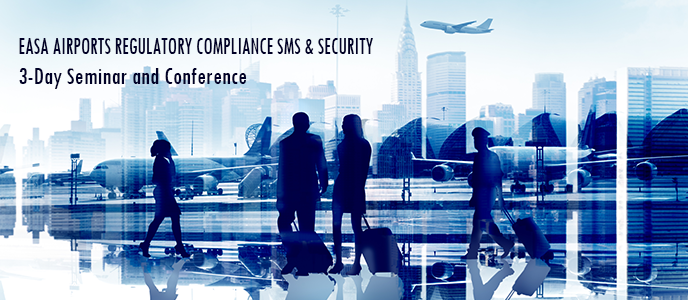What is involved in an Airport Safety Management System?
In advance of the forthcoming EASA Airports Regulatory Compliance, SMS & Security 3 Day Seminar and Conference Heathrow 5th to 7th April
Sofema Aviation Services looks at some of the key elements required to drive a successful system.
A prerequisite to maintaining effective control requires a thorough understanding of all regulatory requirements, together with specific organisational requirements and finally to pay attention to best industry practice & process to ensure we meet our objectives.
The following elements should all have visibility in an effective Airport SMS:
Identify Safety Objectives
We should have a clear understanding of exactly what our objectives are in terms of potential personal, organisational and financial exposures.
Future safety objectives should also be understood and identified to demonstrate and support the continuous development of the SMS.
Developing Best Practice
Co-ordinate and pool information and data where possible to identify and interpret best industry practice.
Ongoing and proactive communication with the regulator to ensure any additional requirements are understood and acted on in a timely manner.
Documented SMS
We should have a documented system which not only shows compliance but is a real and connected system evident throughout the business.
Document Airside Procedures
Alongside the SMS documentation should sit the airside procedures which should be current and must encompass all relevant activities.
Initial & Recurrent Training
As well as airside procedures all personnel must have SMS training which is appropriate to the job function and off course this knowledge should be tested.
Competence Assessment Procedures and Management
The Competence of all key personnel must be ensured and assessed on a continuous basis. The assessors should have the appropriate training to ensure they can accomplish the task in an effective way – auditable.
Assessment of trainers and trainees to be performed this should include any third party training which may be carried out.
Risk Assessment and Risk Register
Risk assessments should be developed for all related activities and elements and an up to date risk register maintained.
Communication Processes
To ensure full communication both ways from top to bottom and bottom to top to ensure a shared understanding of objectives, challenges and to ensure the opportunity for the resolution of any issues.
Emergency Response Plan
Full emergency procedures and protocols to be developed including both contingency and recovery plans.
Hazard Identification – Analysis – Risk Mitigation
Procedures to ensure the identification of hazards together with adequate reporting of all accidents, incidents and near-misses in place.
Processes to ensure that sufficient effort is invested in the process to identify the root causes of accidents, incidents and near-misses and to ensure appropriate mitigations are developed.
Human Factors and Safety Management Systems
Culture and behaviour assessments to be carried out to monitor the effectiveness of the System
Performance Measurement & Communication
Monitor data to measure and identify any trends.
Develop measures for safety performance.
Continuous review of Airport Safety.
Regular sharing of safety information with airside community.
Compliance Related – Management Oversight together with Quality Control & Quality Assurance Activities
Facilities, Equipment and Infrastructure regularly and documented checks.
Ensure all corrective actions and preventative actions are documented and closed out correctly.
Regular oversight together with airside compliance audits.
To register for the event please see the following link: https://sassofia.com/wp-content/uploads/2015/12/SAS-London-Registration-Form1.pdf
If you have any comments or questions please email office@sassofia.com




